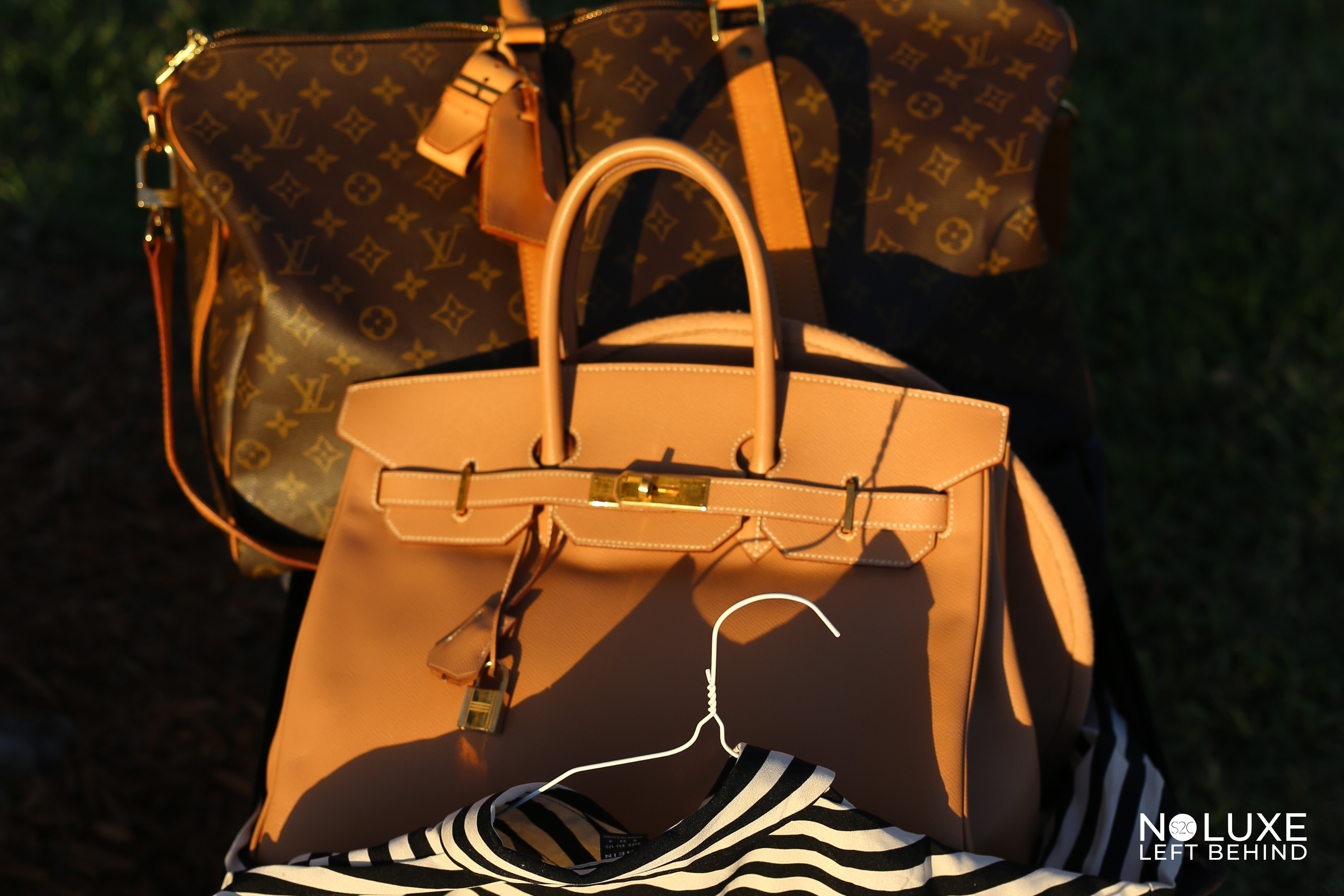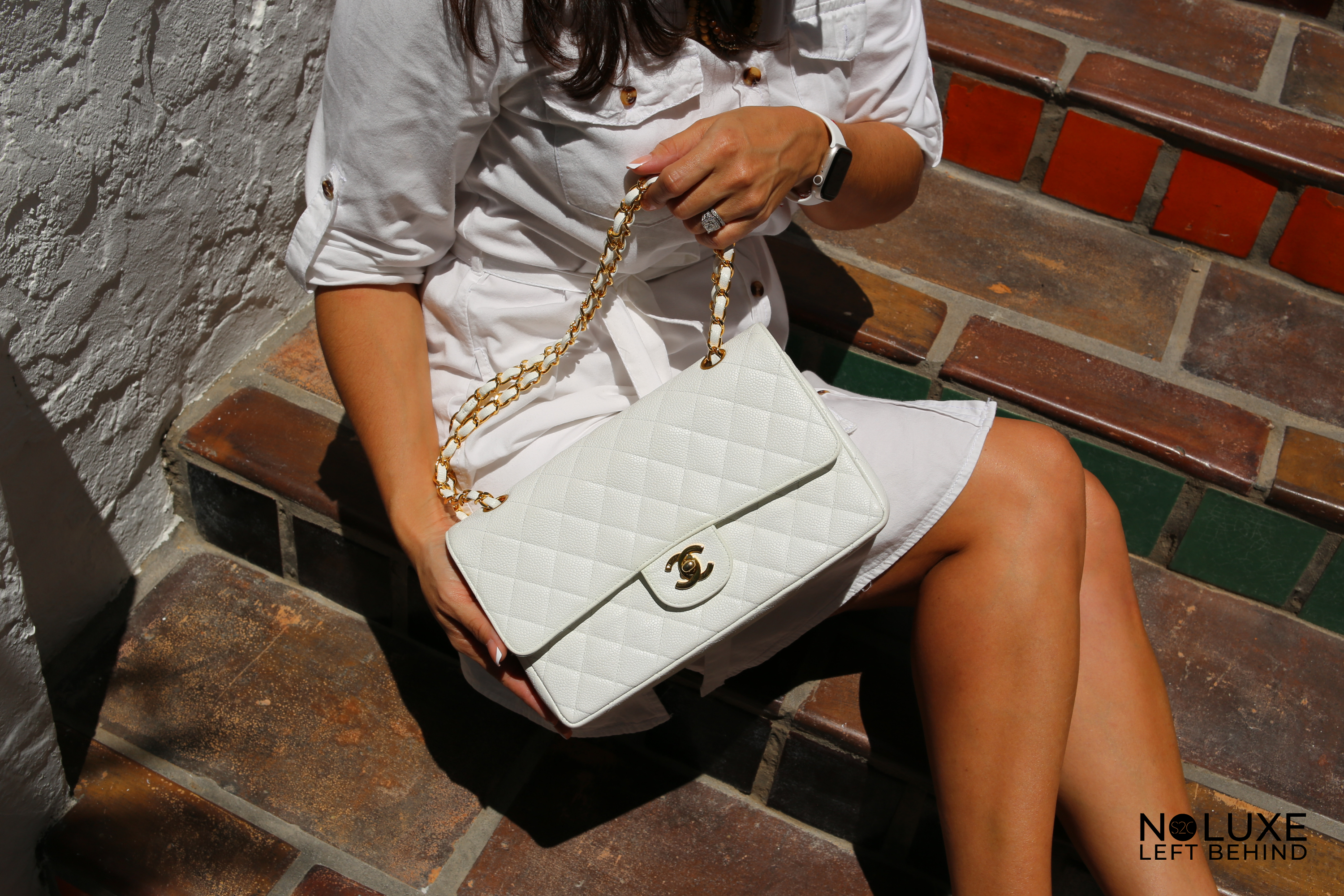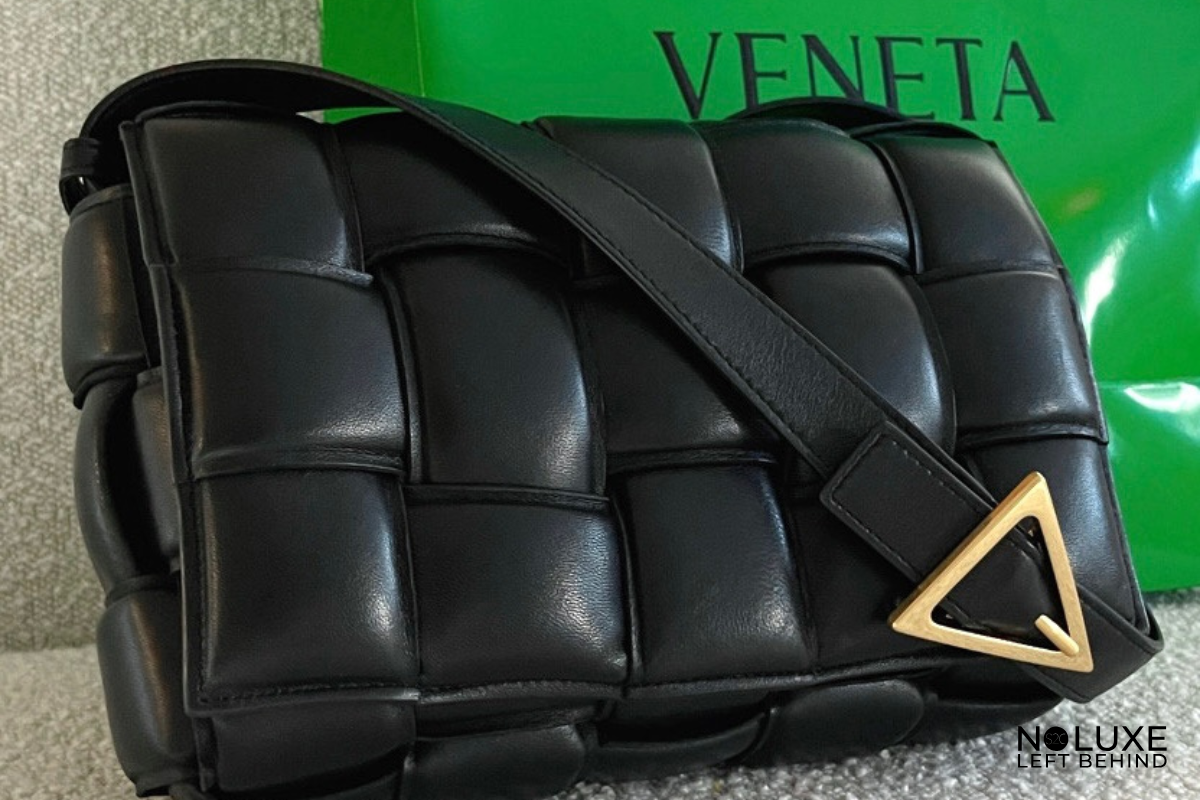
How Much is My Designer Handbag Worth?
Luxury handbags transcend their role as mere accessories; they embody sophistication, artisanal excellence, and frequently, significant financial value.
Whether you're a collector, a discerning vendor, or just curious about your beloved accessory's market worth, knowing what fuels a handbag’s valuation is crucial. Ranging from enduring classics to cutting-edge designs, each bag weaves its own tale and secures a special position in the world of fashion.
Before diving into the specifics, let’s explore why knowing your handbag’s value is so important and how you can uncover its true worth.
Why Understanding the Value of Your Luxury Bag Matters
Understanding the value of your luxury handbag is crucial not just for resale purposes but also for insurance and estate planning.
Knowing it's worth helps in making informed decisions about buying, selling, or holding onto a piece.
Do Designer Bags Hold Their Value?
Designer bags from prestigious brands are often seen as investment pieces due to their ability to retain or even increase in value over time. The resale value depends significantly on the brand, model, and market demand.

How to Find Out How Much Your Handbag is Worth?
Researching Online
A quick Google search for your designer handbag can yield initial insights, but accurately determining its value requires a closer look. Marketplaces like eBay, Poshmark, or Facebook Marketplace often feature individual listings, which can be biased or inconsistent in pricing.
Instead, focus on luxury resale platforms like The RealReal, Vestiaire Collective, or Fashionphile, where professional appraisers often evaluate items, offering a more reliable baseline.
To refine your research, look for comparable listings—commonly referred to as "comps." Pay attention to details like:
-
Size: Mini, medium, or large versions of the same model can vary significantly in price.
-
Material: Bags made from exotic leathers (e.g., crocodile or alligator) typically command a premium.
-
Condition: Terms like "mint," "excellent," "good," or "fair" condition often include specifics about wear, scuffs, or repairs.
By analyzing these elements across multiple sources, you can form a well-rounded understanding of your bag’s current market value.
Remember, even subtle differences—such as original tags, dust bags, or hardware finish—can make a big difference in resale pricing.
Professional Appraisal
For a precise valuation, having your handbag appraised by a professional who specializes in luxury goods is an excellent option. Many services exist in the market, but one of our trusted recommendations is fortheloveofluxury.net, known for providing accurate and unbiased appraisals tailored to luxury items.
When seeking an appraisal, it’s important to understand the distinction between appraisal-only services and those tied to consignment or resale platforms.
While resale platforms like The RealReal or Fashionphile may provide market value estimates, their primary goal is to secure items for sale, which could result in valuations skewed toward their business interests.
Independent appraisers, like fortheloveofluxury.net, focus solely on delivering an accurate market valuation without the pressure of consigning your designer bag(s).
Pro Tip: Avoid submitting repeated inquiries to consignment or resale companies merely to obtain fair market value estimates without the intention of selling.
Many platforms monitor account activity and may flag or block accounts perceived as "abusing" the system. If you repeatedly request price evaluations but decline offers, it could damage your ability to sell through these platforms in the future.
Instead, use dedicated appraisal services for a reliable valuation that won’t affect your seller status.
By working with a trusted appraiser, you’ll gain a clear understanding of your handbag’s worth without compromising your ability to sell or consign it later.
Factors That Determine a Designer Handbag’s Resale Value
Brand Reputation and Exclusivity
Classics are called classics for a reason—they maintain desirability for the foreseeable future. Iconic brands like Chanel, Hermès, and Louis Vuitton have built their reputations on timeless designs and exceptional quality, making their pieces perennial favorites in the resale market.
When evaluating your handbag for resale, consider whether it falls under the "timeless" category. Heritage brands like Chanel, Hermès, and Louis Vuitton consistently produce designs that transcend fleeting trends, ensuring their appeal endures across generations.
Items like the Chanel Classic Flap, Hermès Birkin, or Louis Vuitton Neverfull epitomize timelessness, while seasonal or trend-driven pieces may not command the same long-term value.
Understanding the significance of brand heritage and design legacy can help you determine whether your handbag is likely to hold its value or even appreciate over time.
Condition
The condition of your handbag plays a pivotal role in determining its resale value. Bags in pristine or near-perfect condition—free from noticeable wear or damage—command the highest prices.
Even minor imperfections, such as small scuffs, loose stitching, or fading hardware, can impact the perceived value.
Signs of Wear
Common signs of wear, such as corner scuffs, interior stains, or discoloration, can lower resale value, especially for highly sought-after models. Buyers are often willing to pay a premium for handbags that look as close to new as possible.
Extent of Damage
Damage, such as torn leather, broken hardware, or deep scratches, can significantly reduce a bag’s worth unless repaired by a professional. However, restoration itself can sometimes diminish value, particularly for collectors who prioritize originality.
Restoration Considerations
While professional cleaning and repairs can enhance a bag’s appearance, they must be approached carefully.
Overly aggressive restoration or using non-original materials can make a luxury bag less appealing to collectors. For example, replacing hardware with non-branded pieces or altering the stitching style can detract from its authenticity.
Pro Tip: If your bag shows signs of wear, consider investing in a professional spa treatment, such as cleaning or conditioning services, offered by luxury restoration specialists. This can improve its appeal and fetch a better price in the resale market.
However, weigh the cost of these services against the potential increase in resale value to ensure it’s worth the investment.
By maintaining your handbag in excellent condition and addressing minor issues promptly, you can preserve its value and make it more attractive to potential buyers.
Materials and Craftsmanship
When it comes to materials and craftsmanship, leather is a clear winner.
Known for its durability and timeless appeal, leather handbags are more likely to retain their value over time. In contrast, other materials can present challenges:
-
Fabrics: While often stylish, fabric bags are prone to staining and can lose their shape over time, making them less durable for long-term use.
-
Metals: Hardware, such as chains or clasps, may dull, tarnish, or even warp with frequent handling, impacting both aesthetics and functionality.
-
Beading and Embroidery: While intricate and eye-catching, these details are often fragile and susceptible to damage, particularly with regular wear.
Luxury brands like Hermès, Chanel, and Louis Vuitton are celebrated for their use of premium materials and meticulous craftsmanship. From buttery lambskin to durable coated canvas, these materials not only elevate the bag’s aesthetic but also contribute to its longevity and resale value.
When considering a purchase or preparing a bag for resale, it’s essential to evaluate the material’s condition and how well it has withstood wear over time. Investing in a well-maintained leather bag or ensuring proper care for delicate materials can significantly impact its market value.
Popularity and Market Demand
This is the fashion world, after all—trends matter!
The popularity of specific models and current fashion trends play a crucial role in determining a handbag’s resale value. Luckily, trends often come full circle, with many styles making a comeback sooner or later.
When deciding whether to sell now or hold onto a piece, consider its alignment with current trends.
Is your handbag a perfect fit for today’s fashion zeitgeist, making it primed for a quick sale? Or does it have the potential to gain more value if held onto until it resurfaces as a sought-after style?
For example, the resurgence of vintage-inspired designs like the Fendi Baguette or the Gucci Jackie shows how trends can elevate the value of previously overlooked pieces.
Monitoring fashion cycles and market demand can help you make an informed decision about timing your sale for maximum impact.
Chanel, Hermès, and Louis Vuitton Dominate the Resale Market
These are the big three heritage brands of our time—undisputed champions with the highest visibility in the luxury market.
Their timeless designs, unmatched quality, and storied histories have made them iconic, and thanks to social media, their influence is stronger today than ever.
Platforms like Instagram and TikTok have amplified the desirability of these brands, showcasing their classic styles and limited editions to a global audience.
From the Chanel Classic Flap to the Hermès Birkin and Louis Vuitton Neverfull, these bags consistently hold their value and remain staples of luxury wardrobes everywhere.
Exclusivity (Limited Editions, Waitlists) Enhances Value
Rare pieces are the crown jewels of the luxury handbag world, and their exclusivity significantly drives up resale value.
Limited edition models, like Hermès Birkin bags, Chanel’s seasonal Limited Editions, and Louis Vuitton’s artist collaborations, are prime examples. These pieces often generate long waitlists due to their rarity and desirability.
Once a waitlist forms, the resale price tends to soar, thanks to the classic business principle of "supply and demand." When supply is scarce and demand is high, these coveted items become even more valuable to collectors and fashion enthusiasts.
For instance, an artist collaboration by Louis Vuitton or a rare leather Hermès Birkin can command multiples of its original retail price on the resale market.
Collectors and savvy buyers often recognize the long-term value of owning such exclusive pieces, making them worthwhile investments and timeless additions to any wardrobe.
Seasonal and Trending Bags
While classic models are a safe bet, seasonal and trending bags can also fetch a good price—if you strike while the iron is hot. To command any type of premium for these items, it’s crucial to sell when they’re still in demand.
Seasonal or trend-driven bags often gain value during their peak popularity, especially if they capture the zeitgeist of a particular fashion moment.
However, these pieces can experience a steep decline in value once the trend fades. For example, a limited-edition bag in a trendy finish might fetch top dollar shortly after its release but could lose appeal—and resale value—if not sold promptly.
Timing is everything when dealing with seasonal and trending bags. Monitor demand closely and act quickly to avoid the risk of a value plummet.

Tags and Accessories
This might be resale, but the closer you can get to recreating the boutique experience, the better. Holding on to items like original tags, dust bags, and boxes can make your handbag more appealing to buyers when it’s time to sell.
While these accessories don’t necessarily add monetary value, they act as the cherry on top, making the item easier to sell.
A complete package—one that includes all the original extras—gives the buyer confidence in the authenticity and care of the bag. It also enhances the overall presentation, helping your listing stand out in a competitive resale market.
If you’re planning to sell in the future, consider preserving these items to create an experience as close to the boutique as possible.
Vintage
The adage "they don't make things like they used to" often rings true in the vintage handbag space. Vintage luxury bags, especially those in excellent condition or from significant fashion eras, often carry a premium in the market.
These pieces are prized not only for their timeless designs but also for their superior craftsmanship and unique details, which may no longer be replicated in modern production.
From Chanel bags featuring 24k gold-plated hardware to rare Louis Vuitton trunks or early Hermès designs, vintage handbags capture a sense of history and exclusivity that appeals to collectors and fashion enthusiasts alike.
Bags from iconic fashion eras—such as the 80s or 90s—are particularly sought after, as they offer a nostalgic yet sophisticated charm.
When investing in or selling vintage, authenticity and condition are key. Buyers value pieces that showcase their original features and have been well cared for, reinforcing the enduring appeal of vintage luxury.
Luxury Bags That Prove Their Worth
Chanel Classic Flap Bags
Known for consistently increasing in value, Chanel Classic Flap Bags are a prime example of luxury handbags as a sound investment.
Hermès: The Scarcity and Craftsmanship Behind Birkin and Kelly Bags
The limited availability and handcrafted quality of Hermès Birkin and Kelly bags make them some of the most coveted items in the luxury goods market.
Louis Vuitton: Which Designs Perform Best in Resale Markets
Models like the Neverfull and Speedy are perennial favorites that maintain strong resale values due to their popularity and functionality.
Maximize Your Designer Handbag’s Value by Knowing What It’s Worth
Understanding the worth of your designer handbag is essential for making informed decisions, whether you're selling, consigning, or holding onto it as an investment. By considering factors like brand reputation, condition, exclusivity, and market demand, you can accurately estimate its value and maximise its potential.
Luxury bags from brands like Chanel, Hermès, and Louis Vuitton continue to dominate the resale market, proving that a well-chosen handbag is more than just a fashion statement—it’s a smart investment.
Explore our resources and collection to discover how you can unlock the full value of your luxury handbag.



Leave a comment
This site is protected by hCaptcha and the hCaptcha Privacy Policy and Terms of Service apply.